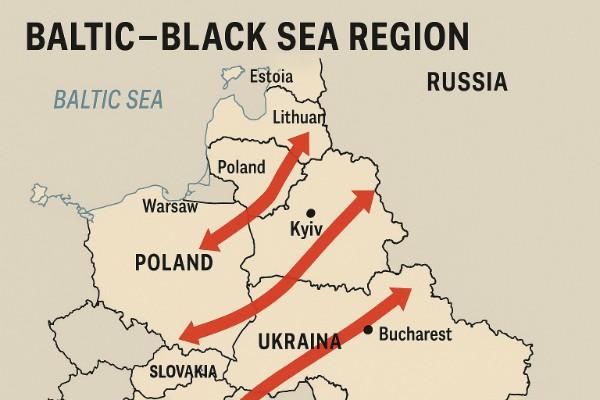For several decades, The South China Sea has been a contentious region for myriad territorial and maritime disputes. It is regarded as a potential flashpoint in Southeast Asia because of its rising significance in terms of strategic location, economic resources, and geopolitical dynamics. The sea is critical for both state and human security because not only does it encompass a wide range of security problems, but it also includes the involvement of extra-regional powers such as Japan and the USA.
The South China Sea is a semi-enclosed body of water present in the western Pacific Ocean and marginal sea, it includes the Straits of Malacca and the Straits of Taiwan. To the south, the Strait of Malacca connects the South China Sea to the Indian Ocean from the Pacific Ocean. The sea is surrounded by the coasts of several states including China, Taiwan, the Philippines, Malaysia, Brunei, Indonesia, Vietnam, Singapore, Cambodia, and Thailand, with conflicting claims to the sea’s maritime and its many islands, islets, and reefs. There are two main island chains, The Paracel Islands and the Spratly Islands. The Paracels are claimed by both the states of Vietnam and China, while there are conflicting claims to the Spratly Island from both these states as well as the Philippines, Malaysia, Brunei, and Taiwan. These states have engaged in geopolitical activities which include strengthening their claims, allowing tourists and journalists to visit their islands, granting concessions to oil companies in their claimed areas, and installing military bases in the islands they claim. In addition, all participants except Brunei have been sought here by station troops on some of the reefs.
From the economic perspective, the sea is one of the busiest maritime trade routes, providing the shortest sea route by connecting East Asia to the rest of the world, mainly oil and minerals traveling to the north, and food and manufactured goods moving to the south. The South China Sea functions as the throat of the western Pacific and Indian Ocean. It is a mass of connective economic tissue where global sea routes coalesce. The region is believed to contain significant non-renewable (oil, natural gas, and hydrocarbons) and renewable resources (fish) beneath its seabed. However, control over islands and maritime territories in the South China Sea is not only about resources but also about asserting national sovereignty and extending influence in the region. The sea’s strategic location has led to the establishment of military bases and facilities by several countries. This militarization has heightened concerns about potential conflicts and security risks.
The South China Sea’s significance has attracted the attention of major global powers like the United States, which seeks to maintain open sea lanes and regional stability. This has led to complex diplomatic and security dynamics in the region.
China has followed an expansionary policy in the South China Sea, claiming its sovereignty over 80% of the region. The Chinese have also stationed their troops and established military bases on several disputed islands. China is pursuing some main goals and objectives in the South China Sea which are: regional integration, resource access and control, and enhanced military modernization. Historically, China claimed this sea centuries ago when the Paracel and Spratly Island chains were thought to be China’s sovereignty or integral part. China has created prominent artificial islands in the South China Sea to right historical wrongs but also to expand its military capacity to defend its interests. It should be viewed as a part and parcel of China’s military modernization campaign including the development of an aircraft carrier capability, attack submarines, and latest-generation fighter jets. China is swiftly expanding its power projection augmenting its range south and east by as much as 1,000 kilometers. China’s growing military tactics and claiming different islands have distorted the order in the South China Sea. The sea is of great significance to China not just because of the historical claims and the concept of Nationalism to the Chinese Communist Party but also because of China’s increasing dependency on economic success (and thus the sustainability of its economic and political system) on flows of commodities, energy, and goods that travel by sea. Another tactic China uses to counter its adversary is the deployment of its radar on several islands. China’s claim to territory in the South China Sea is backed by North Korea.
Although the United States does not claim any land in the South China Sea, it has been using its Air Force and Navy for decades to challenge China’s military presence and has held multiple “freedom of navigation exercises” to patrol the vital waterway. Despite never having formally ratified the United Nations Convention on the Law of the Sea (UNCLOS) into American law, the United States respects many of its rules in marine policy. The United States objected to China’s expanding naval patrol, claiming that it violated UNCLOS, unjustified claims to sovereignty, and restrictions on freedom of navigation.
The United States will also be able to rotate soldiers to nine other locations across the Philippines, including the strategically significant Balabac Island near Chinese installations in the South China Sea, thanks to the Enhanced Defence Cooperation Arrangement (EDCA) between Manila and Washington.
Divergent stances on the disagreement exist among the ASEAN members. China has always taken advantage of the lack of unity among ASEAN members. First and foremost, to outmaneuver Beijing’s “divide and conquer” strategy, like-minded governments must unite. The majority of these littoral nations are allied against China and rely on American military and diplomatic support. States along the coast may see American engagement as a means of preventing Chinese dominance and balancing China’s expanding dominance and influence.
As of now the balance of power is maintained in the South China Sea, with both powers trying to sustain their dominance through competitive co-existence. However, this competition has the potential to shift into a full-blown Confrontation. The South China Sea is currently dominated by the U.S. Navy. Its fleet of navy submarines is unknown. Nonetheless, a change in geopolitical dynamics is being brought about by China’s expanding military modernization program. The South China Sea conflict demonstrates “multipolarity in a military sense” overall. It is the center of 21st-century geopolitics. It is safe to say that politics in Asia are driven by traditional nationalism. The United States and China are caught in a “Thucydides trap.”
Beijing will find it harder to get everything it could want in the South China Ocean. In any case, if the U.S. economy debilitates extensively or on the other hand assuming it loses the political will to keep up with its Pacific maritime predominance, China will have a more straightforward approach to making it happen. It is additionally conceivable that the US will end up diverted by other global priorities, similar to the struggles in Iraq, Syria, and Ukraine are taking steps to gush out past these countries’ boundaries. If such localized struggles become regional conflicts, China will likely benefit in South East Asia and Southeast Asia. However, assuming these are just temporary challenges, Washington trusts that they are liable to witness a long-term power struggle in the South China Ocean with plenty of potential military and political complexities for many years to come.

Table of Contents
ToggleMalaika Shamim Alam
Malaika Shamim Alam is a dedicated scholar pursuing a Bachelor's in International Relations at the International Islamic University Islamabad. With a keen focus on geopolitics, international law, and the dynamics of the new world order, she delves into areas such as international political economy, comparative politics, foreign policy analysis, cybersecurity, hybrid warfare, and arms control, aiming to contribute insightful perspectives to the global discourse.













